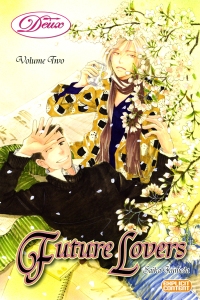 I’m not really sure how comics have managed to keep Rick Geary to themselves. It’s not that I expecting him to move away from the medium; I’m just surprised that the admiration for his work hasn’t cracked beyond the comics audience and into wider venues. Where’s the interview on NPR or a spot in a group profile in the Times? I’ve never met him, so I have no idea if those sorts of things interest him in the slightest, but it seems like comics-friendly journalists are missing one of the medium’s best creators.
I’m not really sure how comics have managed to keep Rick Geary to themselves. It’s not that I expecting him to move away from the medium; I’m just surprised that the admiration for his work hasn’t cracked beyond the comics audience and into wider venues. Where’s the interview on NPR or a spot in a group profile in the Times? I’ve never met him, so I have no idea if those sorts of things interest him in the slightest, but it seems like comics-friendly journalists are missing one of the medium’s best creators.
I’m most familiar with Geary’s non-fiction work, specifically his Treasury of Victorian and XXth Century Murder, published by NBM. They’re terrific, meticulous accounts of gory and intriguing crimes from bygone eras, combining true-crime detail with great art and insightful observations of those eras. I’m less familiar with his fiction works, so Dark Horse’s collection of The Adventures of Blanche was a welcome arrival. Geary always demonstrates a sly sense of humor in his true-crime comics, but he applies it with a freer hand here.
When readers first meet Blanche, she’s a contented grandmother in a small town, but we learn in short order that she wasn’t always so provincial. She left the family farm to study piano in New York, then moved to Hollywood to conduct for the budding motion picture industry, then found herself in Paris, providing musical direction for an avant-garde performance piece at the foot of the Eiffel Tower. Any of those experience would qualify as an adventure, but Geary raises the stakes by folding in secret societies, labor unrest, and international espionage. Curious and compassionate, Blanche is game for just about anything her unexpectedly adventurous life throws at her.
Her story is told through letters home, with Geary illustrating the events. As usual, he revels in the detail of time and place, folding in tidbits of history without derailing the adventurous aspects of the book. Like his heroine, he’s an efficient, engaging storyteller. And Blanche is the perfect kind of heroine for these kinds of stories. She’s modest but not prudish, inquisitive but not foolhardy, and just sure enough of herself to get in trouble (and plucky enough to get herself out).
Maybe Geary’s sterling track record of smart, snappy comics has led to him being taken a bit for granted. He makes it look easy.
 Saika Kunieda’s two-volume
Saika Kunieda’s two-volume  Natsuna Kawase’s
Natsuna Kawase’s 
 Yuki Obata’s
Yuki Obata’s  It’s trite but true that you never get a second chance to make a good first impression, but it’s also true that a second impression can really chip away at the goodwill generated by the first. For example,
It’s trite but true that you never get a second chance to make a good first impression, but it’s also true that a second impression can really chip away at the goodwill generated by the first. For example, 
